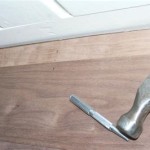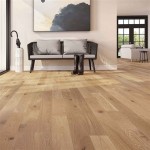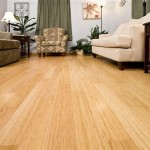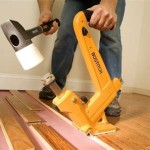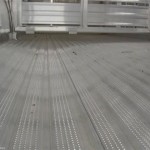Boat Flooring Types in Singapore
The selection of appropriate flooring for a boat in Singapore is a critical decision, influenced by the region's unique environmental conditions. Singapore's climate, characterized by high humidity, intense sunlight, and frequent rainfall, necessitates that boat flooring materials be durable, water-resistant, and capable of withstanding the corrosive effects of saltwater. Beyond these practical considerations, aesthetic preferences and budgetary constraints also play significant roles in the decision-making process. This article explores the various boat flooring options available in Singapore, highlighting their respective advantages and disadvantages, and providing insights into their suitability for different types of vessels and applications.
Teak Decking: A Classic Choice
Teak decking remains a popular choice for boat owners in Singapore, largely due to its inherent beauty, durability, and resistance to decay. Teak is a naturally oily hardwood containing silica, which renders it exceptionally resistant to water damage, rot, and insect infestation. Its natural oils also prevent it from becoming brittle or cracking under prolonged exposure to sunlight. The golden-brown hue of teak ages gracefully over time, developing a silver-grey patina that many boat owners find aesthetically pleasing. However, the installation of teak decking is a labor-intensive process, requiring skilled craftsmanship to ensure a watertight and aesthetically appealing finish.
Maintaining teak decking in Singapore's humid climate requires regular cleaning to prevent the growth of algae and mold. While teak is resistant to decay, neglecting regular maintenance can lead to discoloration and a slippery surface. Furthermore, teak is a relatively expensive material compared to other boat flooring options, making it a significant investment. The sourcing of teak is also a concern, with many boat owners opting for sustainably harvested teak to minimize their environmental impact. The long-term cost-effectiveness of teak decking hinges on proper maintenance and the quality of the initial installation.
Several grades of teak are available, each with varying levels of durability and aesthetic appeal. Burmese teak, considered the highest grade, is renowned for its tight grain and rich color. However, due to conservation concerns and regulations, Burmese teak is becoming increasingly scarce and expensive. Plantation-grown teak offers a more sustainable alternative, although it may not possess the same density and oil content as Burmese teak. The choice of teak grade depends on the boat owner's budget, aesthetic preferences, and commitment to sustainability.
Synthetic Teak: A Modern Alternative
Synthetic teak, also known as faux teak or composite decking, has emerged as a viable alternative to natural teak. These materials are typically manufactured from polyvinyl chloride (PVC) or other polymers, and are designed to mimic the appearance and texture of real teak. Synthetic teak offers several advantages over natural teak, including lower cost, ease of maintenance, and increased resistance to staining and fading. Unlike natural teak, synthetic teak does not require sanding, oiling, or sealing, making it a low-maintenance option for boat owners.
The installation of synthetic teak is generally simpler than that of natural teak, often involving gluing or screwing the planks to the boat's deck. This can reduce labor costs and installation time. However, the quality of synthetic teak varies significantly depending on the manufacturer and the composition of the material. Lower-quality synthetic teak may be prone to fading, cracking, or delamination under prolonged exposure to sunlight and saltwater. Therefore, it is crucial to choose a reputable brand and a high-quality product to ensure long-term durability and performance.
One potential drawback of synthetic teak is its thermal properties. Unlike natural teak, which remains relatively cool to the touch even in direct sunlight, synthetic teak can become quite hot, particularly in Singapore's tropical climate. This can make it uncomfortable to walk on barefoot and may require the use of deck shoes or mats. Despite this limitation, synthetic teak remains a popular choice for boat owners seeking a low-maintenance and cost-effective alternative to natural teak decking.
Marine Carpet: Affordability and Comfort
Marine carpet is another option for boat flooring, offering affordability and a softer, more comfortable surface compared to hard decking materials. Marine carpets are specifically designed to withstand the harsh marine environment, being resistant to water damage, mold, and mildew. They are typically made from synthetic fibers such as polypropylene or nylon, which are hydrophobic and quick-drying. Marine carpet is available in a wide range of colors, patterns, and textures, allowing boat owners to customize the appearance of their vessels.
The installation of marine carpet is relatively straightforward, often involving gluing or snapping the carpet to the boat's deck. Marine carpet can also provide sound dampening, reducing noise and vibration on board. However, marine carpet is not as durable as teak or synthetic teak and is more susceptible to staining and wear and tear. Regular cleaning is required to prevent the buildup of dirt, algae, and mold. In Singapore's humid climate, it is essential to ensure that marine carpet is properly dried after exposure to water to prevent the growth of mold and mildew.
While marine carpet offers a comfortable and affordable flooring option, it may not be suitable for all types of boats or applications. It is generally better suited for interior spaces, such as cabins and cockpits, rather than exposed decks. The choice of marine carpet depends on the boat owner's budget, aesthetic preferences, and the intended use of the boat.
EVA Foam Decking: Lightweight and Non-Slip
Ethylene-vinyl acetate (EVA) foam decking has gained popularity in recent years, particularly for smaller boats and personal watercraft. EVA foam decking is a closed-cell foam material that is lightweight, water-resistant, and non-slip. It provides excellent cushioning and shock absorption, making it comfortable to stand or sit on for extended periods. EVA foam decking is available in a variety of colors, textures, and patterns, including faux teak designs. It is also relatively easy to install, typically using a pressure-sensitive adhesive backing.
One of the key advantages of EVA foam decking is its non-slip properties, which provide excellent traction even when wet. This is particularly important on boats, where slippery surfaces can pose a safety hazard. EVA foam decking is also resistant to staining and fading, making it a low-maintenance option. However, EVA foam decking is not as durable as teak or synthetic teak and is more susceptible to tearing and puncture damage. It is also not as resistant to extreme heat and may become brittle or degrade over time in direct sunlight. In Singapore’s intense sun, UV protection is a consideration.
EVA foam decking is a cost-effective and user-friendly flooring option for boat owners seeking a lightweight, non-slip, and comfortable surface. It is particularly well-suited for smaller boats, personal watercraft, and areas where comfort and safety are paramount. The lifespan of EVA foam decking can be extended with proper care and maintenance, including regular cleaning and protection from direct sunlight when the boat is not in use.
Considerations for Boat Flooring in Singapore
Beyond the specific characteristics of each flooring type, several overarching considerations influence the selection of boat flooring in Singapore. The boat's intended use, the level of exposure to the elements, and the boat owner's budget all play crucial roles. For instance, a boat used primarily for recreational fishing may require a different type of flooring than a luxury yacht intended for entertaining guests.
The level of maintenance required is another important factor. Boat owners who prefer a low-maintenance option may opt for synthetic teak or EVA foam decking, while those who appreciate the traditional look and feel of natural teak may be willing to invest the time and effort required for regular maintenance. The cost of installation should also be considered, as the labor costs can vary significantly depending on the flooring type and the complexity of the installation.
Finally, environmental considerations are becoming increasingly important. Boat owners are increasingly aware of the environmental impact of their choices and are seeking sustainable alternatives whenever possible. This may involve choosing sustainably harvested teak, opting for recycled synthetic materials, or minimizing the use of harmful chemicals in cleaning and maintenance products.

Comparing The Costs Of Eva Foam Boat Flooring 2024 Hjdeck

Eva Foam Boat Flooring The Ultimate Guide To Customization Options Hjdeck

Marine Vinyl Flooring Is All The Rage This Season Matworks

Exploring The Best Flooring Options For Boat Owners Hjdeck

How To Install Pe Eva Foam Boat Flooring Hjdeck

Pontoon Boat Flooring Options Avalon Boats

Hexagonal Stripes Eva Self Adhesive Boat Decking Sheet Non Skid Marine Flooring For Yacht Rv Swimming Pool 94 5 X 35 4 Thick Mat Buy Now With Express International Delivery Gosupps Com

Eva Boat Flooring Options Custom Deck Armour

Snap In Boat Flooring And Custom Carpet Mats Replacement Matworks

Everything You Need To Know About Your Boat S Teak Decking Allied Marine
Related Posts

